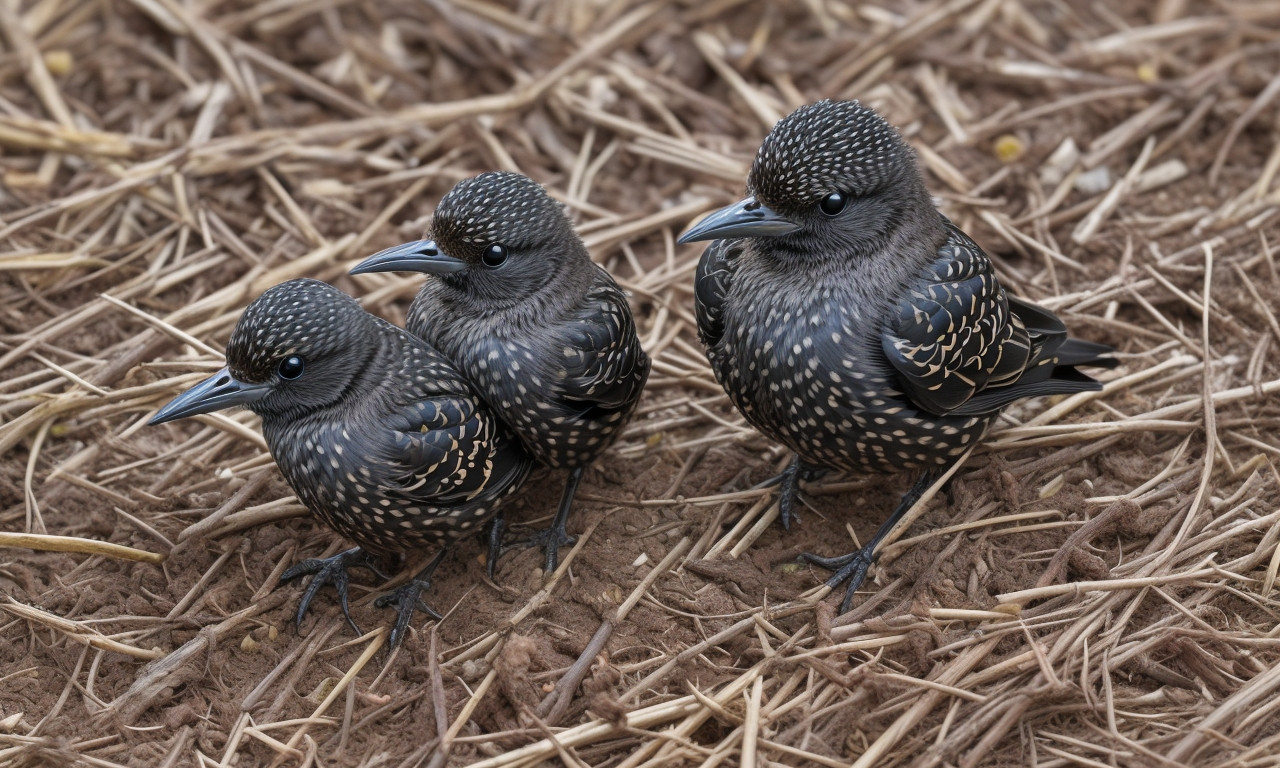Baby Starlings – Lifecycle, Identification, Diet & Amazing Facts: Unveil the enchanting world of baby starlings! These tiny avian wonders captivate with their mesmerizing lifecycle, distinctive identification traits, and intriguing diet preferences. From their first chirps to their maiden flights, discover the awe-inspiring journey of these feathered marvels. Dive deep into amazing facts you won’t believe – did you know starlings can mimic other birds’ calls with uncanny accuracy? Get ready to be spellbound by the fascinating life of baby starlings as we unravel the secrets of these extraordinary birds!
What Does a Baby Starling Look Like?
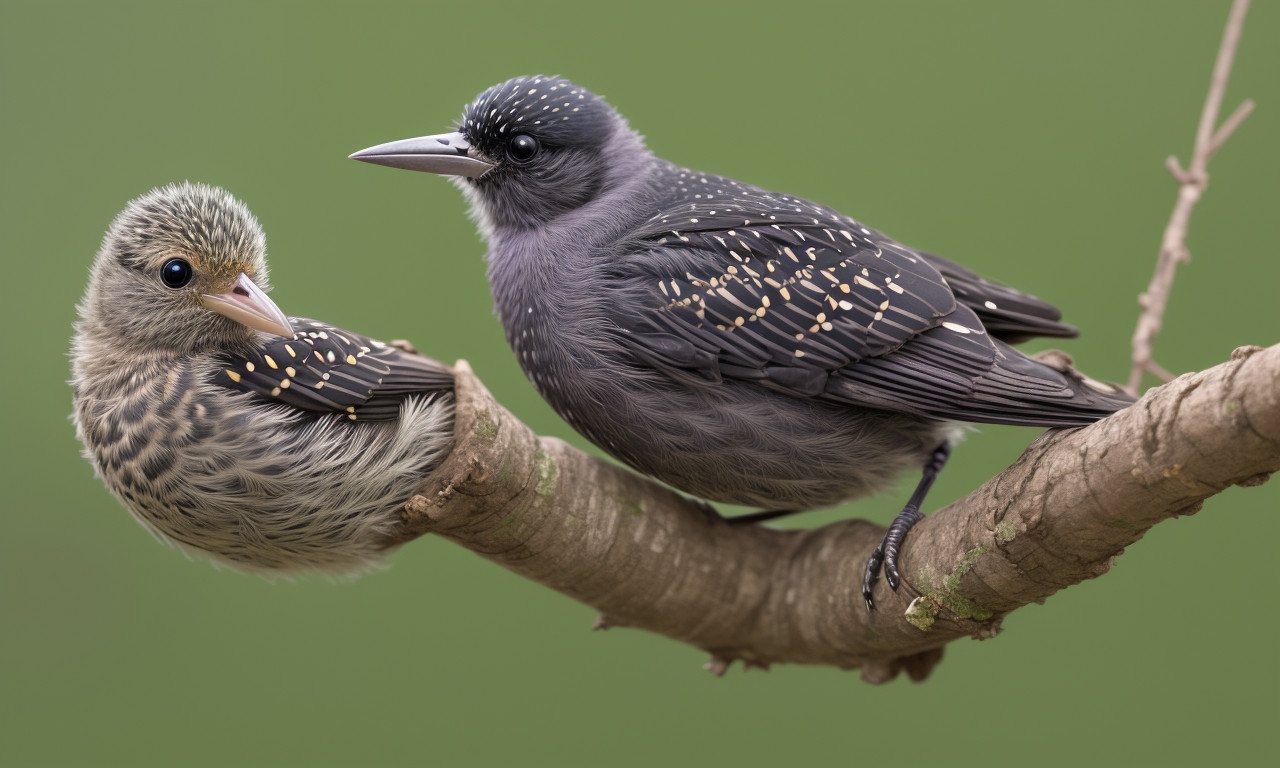
Baby starlings are fascinating creatures with a distinctive lifecycle, unique identification features, and an intriguing diet. Understanding "What Does a Baby Starling Look Like?" is essential for bird enthusiasts and researchers alike. Baby starlings, also known as fledglings, have a unique physical appearance compared to their adult counterparts. When they first hatch, baby starlings are generally pink and featherless, relying solely on their parents for warmth and nourishment.
As they grow, their plumage develops into soft, grayish down, making them look remarkably different from the iridescent feathers of mature starlings. By the time they are ready to leave the nest, their feathers become darker, resembling a dusky hue with faint streaks.
The diet of baby starlings is primarily composed of insects, which their parents diligently foraged. As they age, they gradually adapt to the adult starling diet, which includes fruits, seeds, and even small vertebrates.
An interesting fact about baby starlings is their incredible learning ability. They are known to mimic sounds from their surroundings, which helps them develop their characteristic songs and calls. Observing these birds offers valuable insights into avian behavior and the wonders of nature, making baby starlings a subject of enduring interest.
Nest

Baby starlings are remarkable little creatures with a fascinating lifecycle. From the moment they hatch, these fledglings begin a journey of rapid growth and transformation. Their lifecycle starts in a meticulously crafted nest, usually constructed in trees, buildings, or even cliff crevices. Parent starlings build the nest using twigs, grass, and other soft materials, ensuring a secure and cozy environment.
Identification of baby starlings can be achieved by observing their physical traits and behaviors. They are typically duller in color compared to adult starlings, with speckled brown feathers and a less iridescent sheen. These young birds have a distinct, high-pitched call that they use to communicate with their parents, particularly when hungry.
Diet plays a crucial role in their development. Baby starlings are primarily fed a nutrient-rich diet of insects and worms delivered directly to the nest by their foraging parents. This protein-heavy diet is essential for their rapid growth and feather development. As they mature, they gradually begin to consume a more varied diet, including seeds and fruits.
Amazing facts about baby starlings include their ability to fledge in just a few weeks and their impressive mimicry skills, even at a young age. This quick transition from nestling to fledgling exemplifies the resilience and adaptability of these charming birds.
How To Tell Baby Starlings Apart?
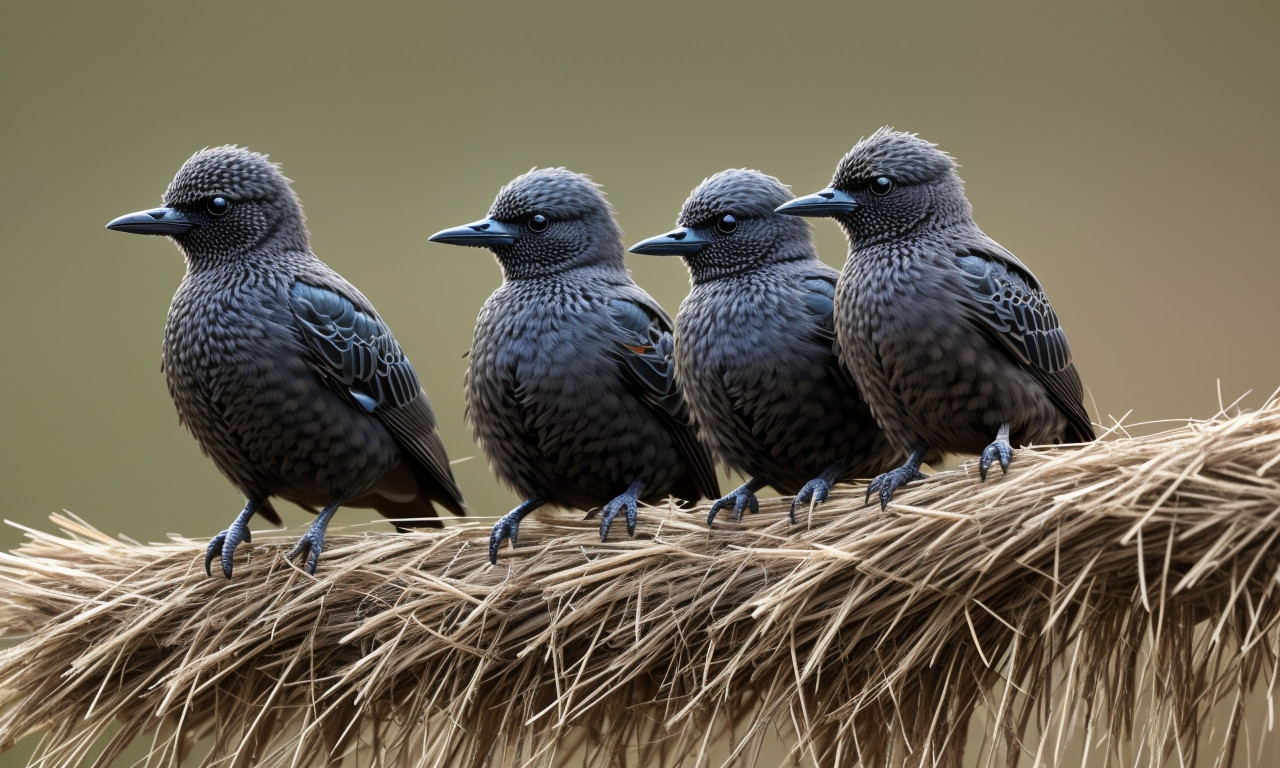
Baby Starlings, with their irresistible charm, embark on a fascinating journey from hatchlings to fledglings. Their lifecycle begins as tiny eggs in well-crafted nests. Once hatched, baby starlings are mostly helpless, relying on their parents for warmth and nourishment. As they grow, they develop unique features that help in identification.
For those wondering "How To Tell Baby Starlings Apart?" young starlings initially sport a drab, brownish plumage, unlike the iridescent hues of their adult counterparts. Their beaks are more slender and less vibrant, aiding in distinguishing them from other young birds.
Diet plays a vital role in their development. Baby starlings are voracious eaters, consuming a diet rich in insects and fruits provided diligently by their parents. This high-protein diet fuels their rapid growth, enabling them to learn critical survival skills.
One fascinating fact about baby starlings is their early stage mimicry abilities. Even before mastering their own calls, they can imitate sounds from their environment, showcasing an incredible adaptability.
Observing the lifecycle of baby starlings offers valuable insights into their development and the broader avian world. From understanding "How To Tell Baby Starlings Apart?" to appreciating their dietary needs and mimicry skills, these small creatures provide endless fascination.
What Kind Of Food Do Baby Starlings Eat?
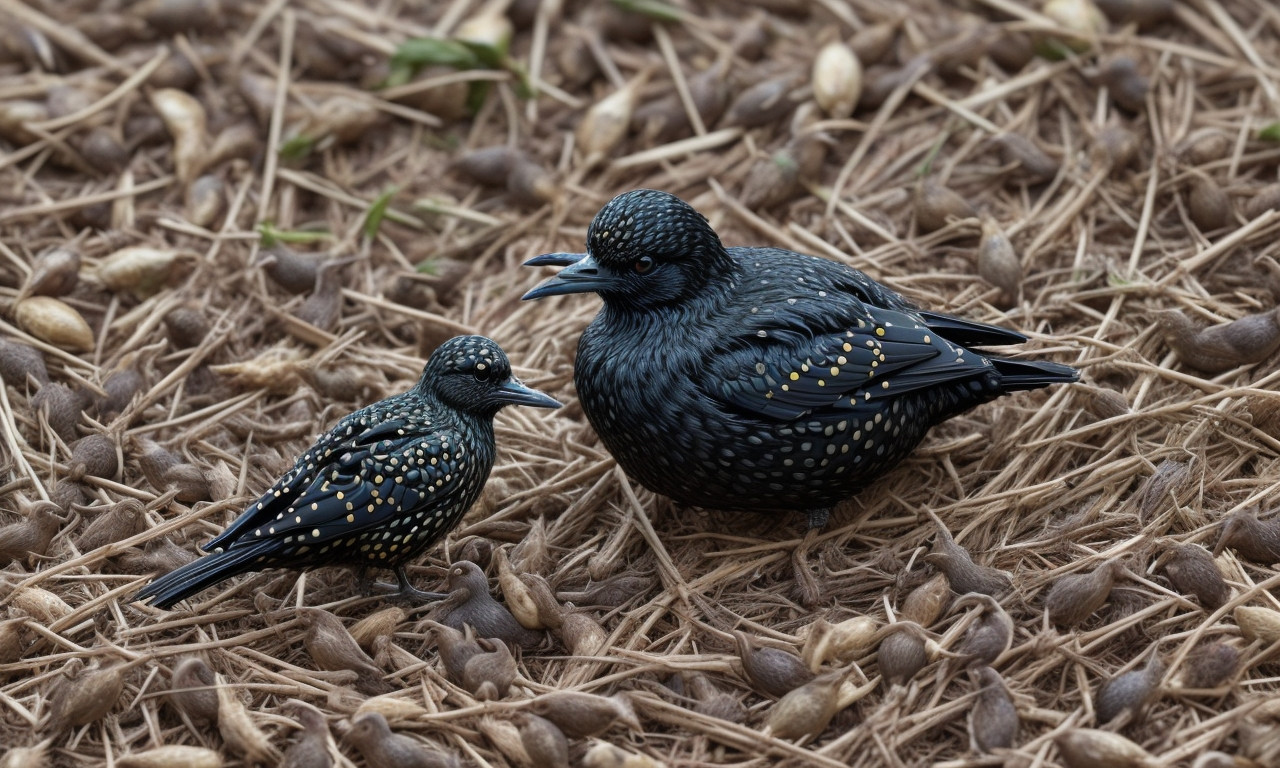
Baby starlings are fascinating creatures with a lifecycle that begins with their hatching from tiny eggs. These birds are typically identified by their soft, fluffy plumage and their unmistakable chirps calling for food. One common question is: What kind of food do baby starlings eat? Initially, their diet consists primarily of soft-bodied insects and larvae, which are easier for the hatchlings to digest. As they grow, their diet becomes more varied and can include fruits, seeds, and even small worms.
The baby starlings’ rapid development is truly remarkable. From hatching to fledging, they undergo significant changes, gaining strength and developing feathers necessary for flight. Parents work tirelessly to keep up with their offspring’s insatiable appetites, often foraging for hours to provide enough nutrients.
Apart from their dietary requirements, learning about baby starlings provides insight into the intricate behaviors and adaptability of these birds. For example, starlings are known for their incredible mimicry skills, learning to imitate sounds from their environment, including other bird calls and even human noises. Understanding their lifecycle, diet, and unique traits not only enriches our knowledge but also deepens our appreciation for these extraordinary feathered beings.
Frequently Asked Questions

Baby starlings, known for their fascinating lifecycle, unique identification features, diverse diet, and intriguing facts, often spark curiosity. Frequently Asked Questions about these birds usually revolve around these areas. Their lifecycle begins with a clutch of eggs hatching in about 12 days. Nestlings remain in the nest for approximately three weeks, during which they are fed by devoted parents. Understanding baby starlings requires recognizing their distinctive appearance: soft, fluffy plumage with a blend of pinkish skin.
In terms of diet, baby starlings initially rely on insects and soft foods their parents collect. As they grow, their diet expands to include fruits, seeds, and occasionally human-provided foods like bread. This varied diet supports their rapid growth and development.
When it comes to amazing facts, baby starlings can mimic sounds and have impressive vocalizations even in early stages. They’re also social, often seen in flocks that enhance their survival and learning skills. Frequently Asked Questions also touch on their migratory patterns, which are fascinating as they join larger flocks to journey towards favorable climates.
For bird enthusiasts and nature lovers, baby starlings represent an engaging subject, rich with details about their development, behaviors, and the role they play in ecosystems.
What do baby starlings look like?

Baby starlings, also known as nestlings or fledglings, go through a fascinating lifecycle before maturing into the iridescent birds commonly found in many regions. What do baby starlings look like? Initially, they hatch nearly featherless with closed eyes and a pinkish skin tone. As they grow, soft downy feathers begin to emerge, followed by juvenile plumage that appears browner and less glossy compared to adult starlings.
Identifying baby starlings becomes easier around day five when their eyes open and their beaks start to resemble those of adults, albeit softer and more flexible. Their fledgling stage is marked by an increased activity within the nest and a loud, persistent call for food.
The diet of baby starlings comprises primarily insects brought by their parents. Earthworms, beetles, and caterpillars provide the essential protein required for rapid growth. Sometimes, they also consume fruits and seeds, balancing their nutritional intake as they prepare for independent foraging.
One amazing fact about baby starlings is their remarkable learning capability. They quickly pick up the complex vocal patterns of their parents, developing a range of sounds that contribute to their species’ diverse song repertoire. This early learning sets the foundation for their future social interactions within large, dynamic flocks known as murmurations.
How long does it take for a baby starling to fly?
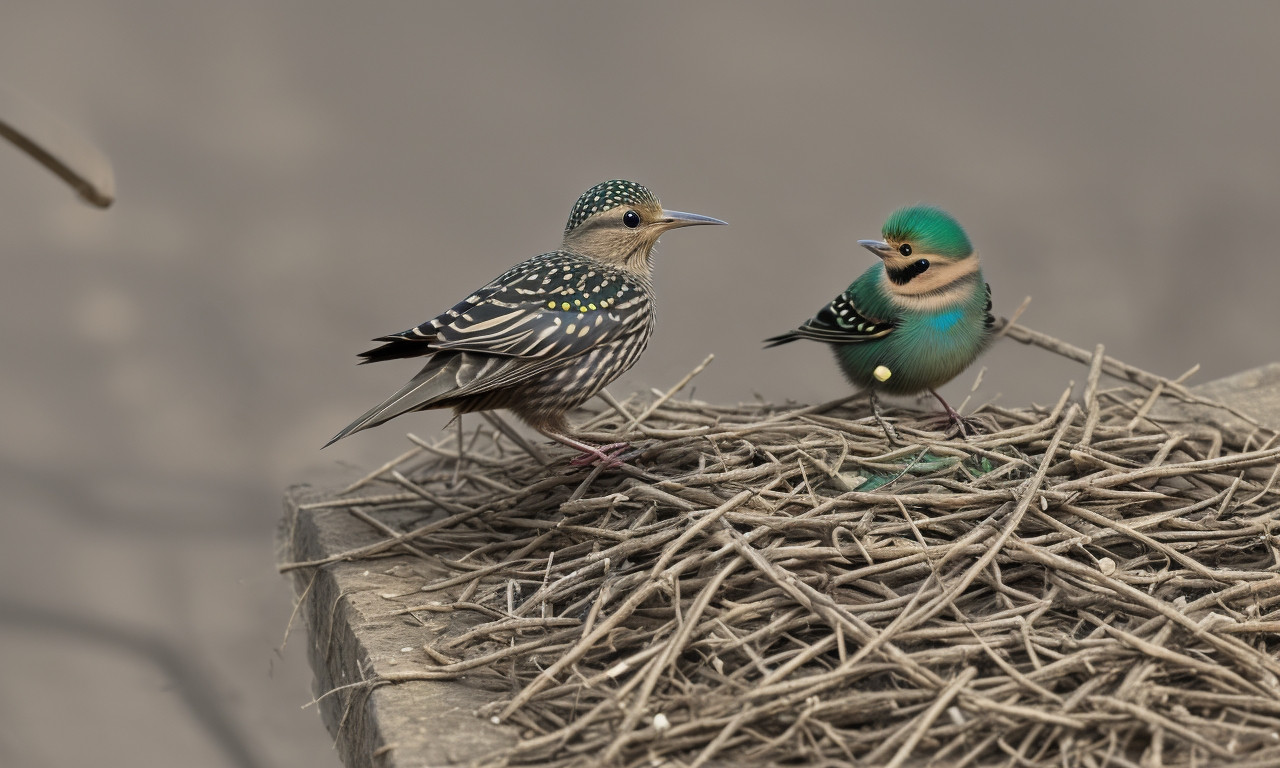
Baby starlings, known scientifically as Sturnus vulgaris, exhibit a fascinating lifecycle that captivates bird enthusiasts and researchers alike. The journey of a baby starling from egg to fledgling begins in a well-hidden nest where parents meticulously care for their offspring. The eggs take about 12 days to hatch, revealing tiny, naked chicks that require constant attention and feeding.
One of the most intriguing aspects is how long it takes for a baby starling to fly. Typically, young starlings fledge, or leave the nest, and start flying approximately three weeks after hatching. This rapid development is crucial for their survival as they learn to navigate their surroundings and evade predators.
In terms of identification, baby starlings initially have a drab, brownish appearance before their plumage transforms into the more familiar iridescent black feathers of adult starlings. Their diet is equally interesting; during the early stages, parents feed them a protein-rich diet of insects and other small invertebrates to ensure rapid growth. As they mature, their diet diversifies to include fruits, seeds, and even scraps of human food.
These young birds are not only quick learners but also highly social, often forming large flocks that perform mesmerizing aerial displays known as murmurations. All these factors contribute to the remarkable lifecycle of baby starlings, from their first hesitant flights to becoming agile adult fliers.
What do you do if you find a baby starling?

Baby starlings, with their delicate feathered bodies and bright eyes, are fascinating creatures to study. They hatch from small, speckled eggs after about 12 days of incubation. Typically, a starling nest contains four to six eggs. Parental care in the first few weeks is critical for their survival, with the mother and father diligently bringing food to the nest throughout the day.
Identifying baby starlings requires attention to detail; they appear quite different from adults. Baby starlings, or fledglings, often have brownish, fluffy feathers, unlike the iridescent plumage of their parents. You may also hear their distinct, persistent begging calls, especially when they are hungry.
What do you do if you find a baby starling? First, observe from a distance to determine if the parents are nearby. Often, they are still caring for the fledgling even if it appears alone. If it’s in immediate danger, gently move it to a safer location close to where it was found to maximize the chances of the parents locating it.
Regarding their diet, baby starlings primarily consume insects and worms, delivered by their parents. As they grow, they start to eat more seeds and fruits. These adaptable birds have an impressive ability to communicate, using a variety of sounds and even mimicking noises. Appreciating their lifecycle and habits gives deeper insight into these remarkable avian creatures.

